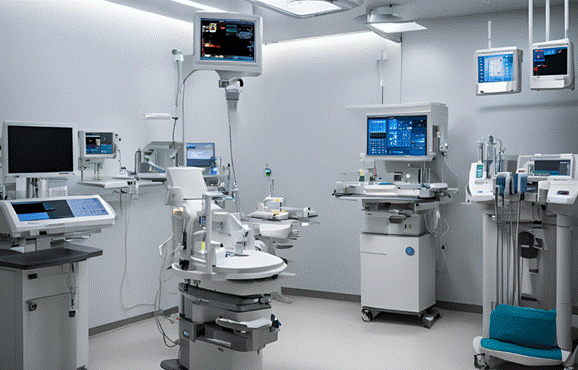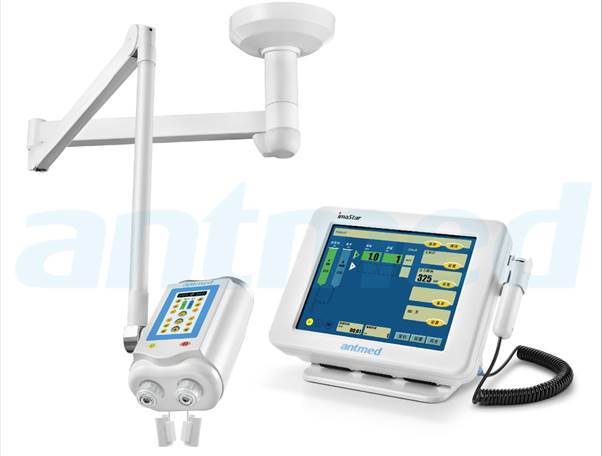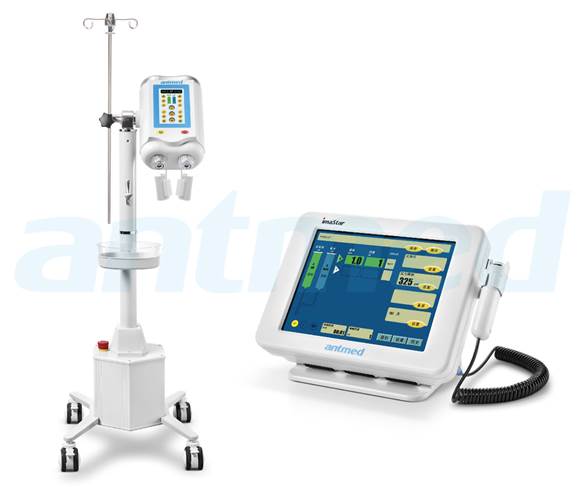Medical imaging utilizes contrast injectors to precisely illuminate tissues, arteries, and diseases while delivering contrast agents. In CT and MRI scans, regulated injection time influences image quality and diagnostic accuracy.
However, pressure management, flow rates, and automated contrast administration matched to individual anatomy must be considered when choosing a contrast injector for patient safety. The correct injector also decreases extravasation risk and optimizes imaging protocol synchronization for high-fidelity diagnostic outcomes.

Understanding Contrast Injectors
Definition and Function of Contrast Media Injectors
Contrast injectors administer contrast media into a patient's vascular system during CT, MRI, and angiography. They control the flow, timing, and dosage of contrast agents for consistent and precise delivery into the bloodstream. They may integrate with imaging systems to synchronize injection with scan timing for optimized image acquisition.
Contrast injectors also incorporate real-time monitoring of injection pressure and flow rates to avoid extravasation. Also, dual-head injectors can deliver two different contrast agents or flush solutions to simplify imaging protocols.
The Importance of Contrast Injectors in Diagnostics
Contrast injectors improve the diagnostic quality of medical imaging. With the better visibility of soft tissues, vasculature, and organs, they enable radiologists to detect tumors, blockages, or aneurysms with clarity.
For instance, in cardiac CT angiography, precise contrast injection timing captures high-quality images of coronary arteries. Moreover, the injectors guarantee the safe administration of contrast agents to avoid contrast-induced nephropathy while controlling dose rates. Customizing injection protocols according to patient-specific parameters, including age, weight, and cardiovascular health, also augments both safety and diagnostic accuracy.

Top 5 Factors to Consider When Choosing Contrast Injectors
Safety Features
When evaluating a contrast injector, safety features help evade over-pressurization or extravasation during contrast media administration. High-end injectors incorporate pressure monitoring systems that can detect fluctuations in real time and auto-adjust flow rates to decrease vessel rupture. Another safety mechanism is air detection technology. It prevents the inadvertent injection of air bubbles, which could cause air embolism.
Injector Precision and Accuracy
Precision and accuracy in a contrast injector guarantee the exact delivery of contrast media, which is key to CT and MRI imaging. Injectors now employ feedback loops that assess the volume and rate of injection to adjust for optimal dosing.
For instance, dual-syringe injectors enable precise bolus tracking while delivering contrast and saline in closely controlled intervals for better image contrast and diagnostic quality. Consistency in flow rate and volume helps attain reproducible results across imaging sessions. It makes precision a defining factor for picking a contrast injector.
Ease of Use
The user interface of a contrast injector can impact workflow efficiency. Intuitive touchscreens with user-friendly navigation can cut setup time in high-throughput radiology departments. Furthermore, contrast injectors with programmable protocols offer one-touch operation, so technicians can automate routine injection sequences. It lowers the cognitive load on operators and human error.
Compatibility with Different Modalities
A contrast injector must integrate with imaging modalities, including CT, MRI, and angiography systems. Multi-modality injectors are common for quick changes in protocols according to the imaging requirements.
For example, MRI-compatible injectors require non-ferromagnetic materials and must function without electromagnetic interference. In contrast, CT scan injectors may need to sync with imaging software for bolus timing. Models allow users to switch between modes without manually changing hardware, which boosts workflow continuity. PET-CT might require injectors to be optimized for low-dose contrast protocols, which demands specific injector settings.
Maintenance
Maintenance is also an important factor when choosing a contrast injector. Calibration and self-diagnostic features decrease stoppage and validate that injectors execute optimally over time. Models may feature modular designs, so individual components can be replaced rather than the entire system. Automated cleaning protocols are also valued for MRI injectors, which must be flushed due to the high viscosity of some contrast agents.
Further, preventive maintenance programs from manufacturers can track usage metrics. It helps radiology departments plan for service before performance issues arise. It also curtails costly repairs and gives incessant operation.

Why Choose Antmed's Contrast Injectors?
At Antmed, precision and dependability are our hallmarks when designing contrast injectors for CT, MRI, and DSA.
To start with, our injectors provide contrast media rapidly and reliably at different flow rates due to high-pressure capacity. A double confirmation feature confirms air purging and injection-ready status before any injection, ensuring safety. Additionally, operator error is decreased via waterproof design and user-friendly interfaces that integrate into clinical operations. Furthermore, there is no need to do additional wiring with a Bluetooth funtion; simply out-of-the-box and ready to use.
With safety, precision and ease of use, our contrast injectors are exactly what you need!
Conclusion
Recognized as Guangdong High-Pressure Imaging Engineering Center, our intensive R&D set us apart. We satisfy worldwide demand in over 120 countries with 300,000 square meters of industrial space. Quality control is stringent, following ISO13485 and CE requirements, which guarantees outstanding performance and safety across imaging modalities for our contrast injectors and associated devices.
If you are looking for top-notch contrast injectors, do not hesitate to visit our website or contact us to get help!


 Medical Imaging Products
Medical Imaging Products Anesthesia Intensive Care
Anesthesia Intensive Care Cardiovascular and Peripheral Products
Cardiovascular and Peripheral Products



